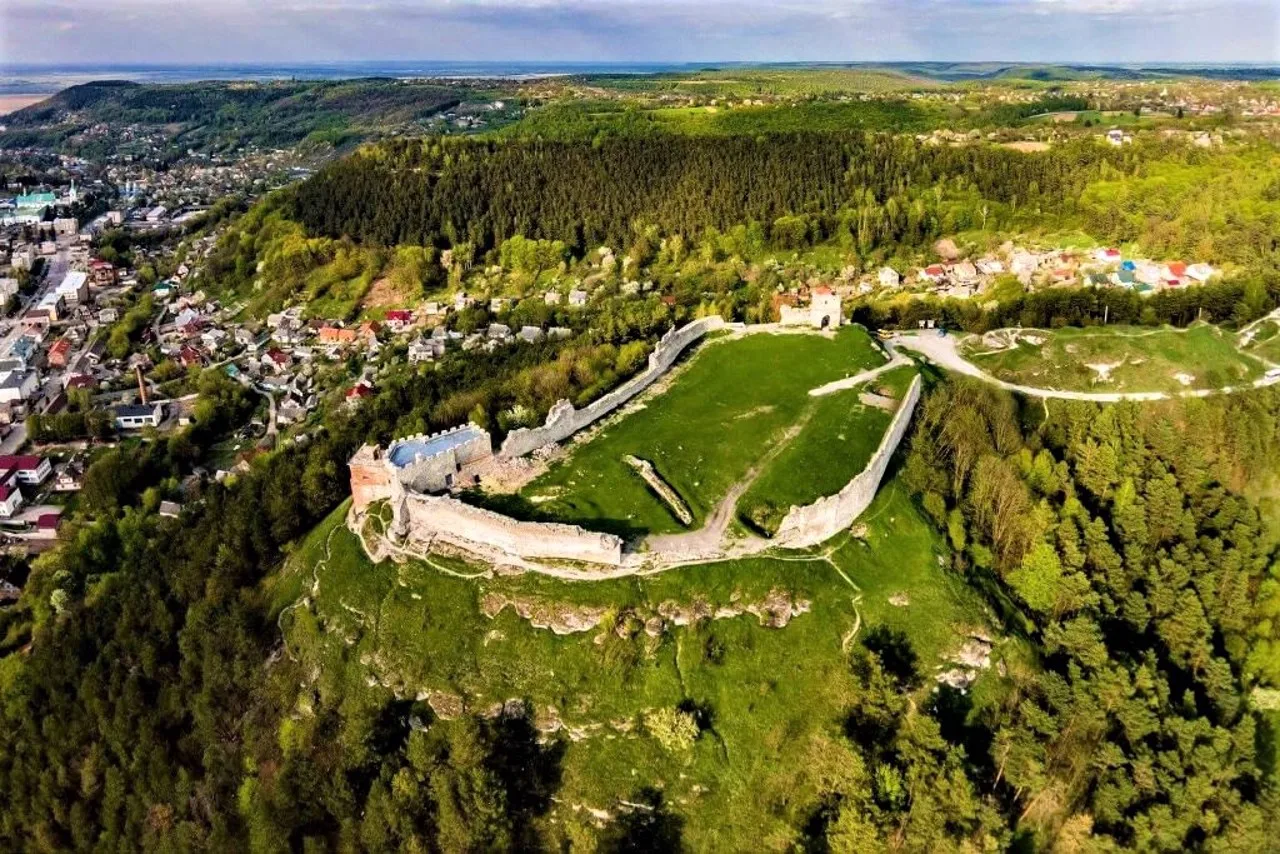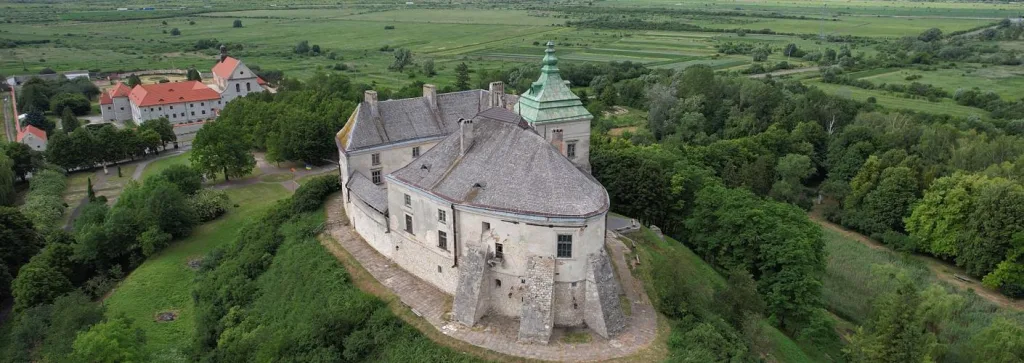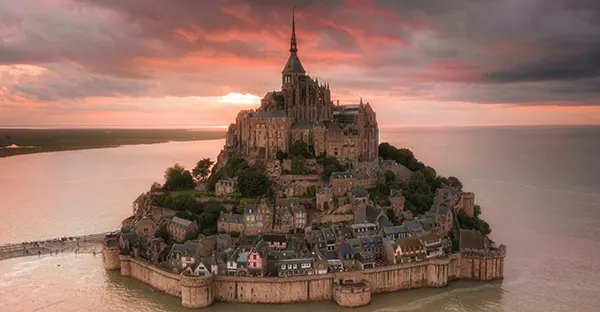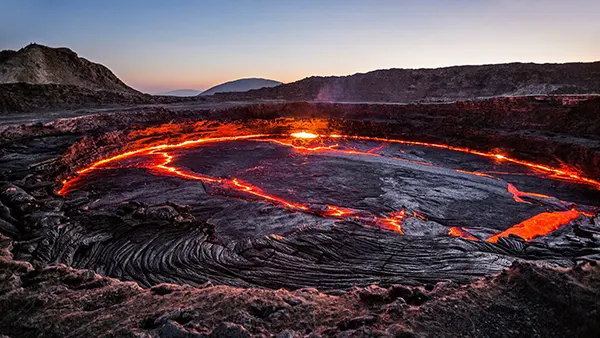
Unknown Castles of Ukraine: History and Architecture
Ukraine’s historical landscape is dotted with countless castles, each carrying a unique story. While many have gained fame as tourist destinations, some remain underappreciated, offering a wealth of untapped historical and architectural treasures. These lesser-known castles provide an extraordinary glimpse into the country’s diverse cultural heritage and the strategic importance of its lands throughout the centuries. In this article, we explore three remarkable, though often overlooked, Ukrainian castles: Kremenets Castle, Chervonohorod Castle, and Olesko Castle. Their histories, architectural features, and current conditions remind us of the enduring beauty and significance of these ancient structures.
1. Kremenets Castle: A Stronghold of Volhynia
Kremenets Castle, perched on Mount Bona in western Ukraine, is a site rich in both history and myth. Constructed during the 12th century, the fortress served as a key defensive stronghold for the Volhynia region. Thanks to its strategic position overlooking the valley, the castle could monitor and protect trade routes connecting Eastern Europe to the West. During the Mongol invasions of the 13th century, Kremenets Castle withstood numerous sieges, cementing its reputation as an impenetrable bastion.
The castle’s historical significance continued into the 16th century, when it became a focal point for regional power struggles. Despite enduring damage during these conflicts, Kremenets remained an essential military site until the 17th century. Today, its ruins stand as a testament to the architectural ingenuity of its builders and the turbulent history it witnessed.
Architectural Highlights
What remains of Kremenets Castle offers fascinating insights into medieval fortification techniques. The castle features robust limestone walls that once rose high above the valley, with narrow windows designed for archers. Its polygonal layout reflects influences from Byzantine and Romanesque traditions, blending defensive functionality with aesthetic considerations. While much of the structure has been lost to time, the main gate and fragments of the northern tower remain visible. These remnants, coupled with archaeological findings, allow historians and architects to piece together its original design.
Visitors to the site can climb Mount Bona to enjoy panoramic views of the surrounding landscape, imagining how the castle once dominated this region. Preservation efforts are underway to stabilize the ruins and prevent further erosion, ensuring that Kremenets Castle continues to captivate future generations.
2. Chervonohorod Castle: A Forgotten Masterpiece
Chervonohorod Castle, located near the serene Dniester River, is a site steeped in legend and mystery. This castle dates back to the 9th century, originally built as a wooden fort to guard against invading tribes. By the 14th century, it was reconstructed in stone, evolving into a fortified estate that reflected the Renaissance architectural trends of the time. The castle played a pivotal role in the region’s political landscape, changing hands between noble families and rulers.
During the 17th century, Chervonohorod underwent a dramatic transformation into a palatial residence. The addition of lavish gardens, intricate interior designs, and impressive stonework marked the height of its splendor. However, this prosperity was short-lived, as the castle suffered extensive damage during various conflicts and invasions. By the 20th century, it had fallen into disrepair, becoming one of Ukraine’s most intriguing ruins.
Architectural Highlights
Chervonohorod Castle is renowned for its iconic twin cylindrical towers, which still rise majestically above the surrounding landscape. These towers are adorned with Renaissance-inspired motifs, reflecting the artistic and cultural influences of the period. The castle’s layout included a central courtyard, a grand hall, and numerous residential chambers. Though much of the structure has been reduced to ruins, the surviving elements reveal the castle’s former elegance.
Ongoing preservation projects aim to protect the remaining towers and stabilize the surrounding structures. These efforts seek to balance the site’s historical integrity with modern accessibility, allowing visitors to appreciate its enduring charm.

3. Olesko Castle: A Cradle of History
Olesko Castle, nestled in the rolling hills of the Lviv region, is among Ukraine’s most historically significant castles. Built in the 14th century, this fortress played a vital role in the region’s defense during medieval times. Its strategic location on a hilltop allowed it to serve both as a military stronghold and a residence for nobility.
The castle’s historical legacy is perhaps most notable as the birthplace of King John III Sobieski of Poland, who later led the famous victory at the Battle of Vienna. Over the centuries, Olesko Castle underwent numerous renovations, incorporating Gothic, Renaissance, and Baroque elements into its design. These changes reflect the cultural and architectural shifts that shaped the region during its complex history.
Architectural Highlights
The rectangular design of Olesko Castle, fortified by high walls and surrounded by a moat, epitomizes medieval construction principles. Inside, its Baroque interiors feature intricate frescoes, ornate woodwork, and a collection of historical artifacts. The castle also houses a rich gallery of paintings and sculptures, making it a cultural and artistic hub.
Today, Olesko Castle functions as a museum managed by the Lviv National Art Gallery. Visitors can explore its restored interiors and enjoy exhibitions that celebrate Ukrainian history and art. The castle’s enduring appeal lies in its ability to connect the past with the present, offering a window into the lives of those who once walked its halls.
Ukraine’s unknown castles, such as Kremenets, Chervonohorod, and Olesko, serve as poignant reminders of the nation’s storied past. Preserving these sites is essential not only for their historical value but also for their potential to inspire future generations. By visiting and supporting efforts to maintain these treasures, we ensure that their legacies endure for years to come.
Popular articles
-
 Mont-Saint-Michel (France): the abbey island shaped by tides
Mont-Saint-Michel (France): the abbey island shaped by tidesMont-Saint-Michel is one of the most distinctive historical sites in …
-
 Depression Danakil: Ethiopia’s Fierce and Haunting Landscape
Depression Danakil: Ethiopia’s Fierce and Haunting LandscapeThe Danakil Depression in Ethiopia is often described as one …
-
 Coimbra, Portugal — A Student City Shaped by Centuries of Academic Tra...
Coimbra, Portugal — A Student City Shaped by Centuries of Academic Tra...Coimbra stands as one of Portugal’s most influential cultural and …
